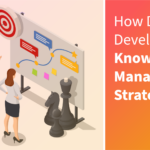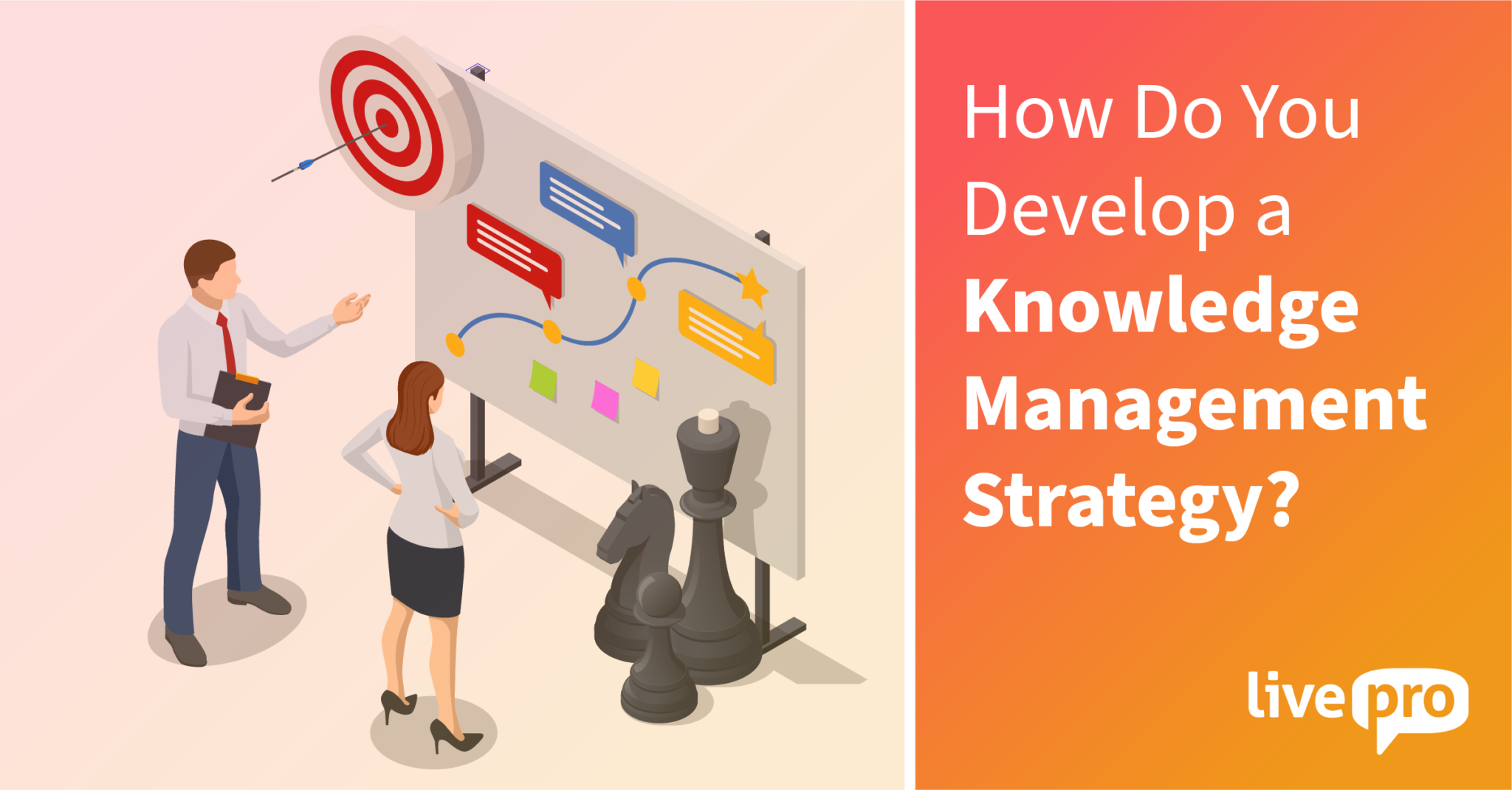Usama Khan
Your team has the answers, but those answers are scattered across inboxes, buried in PDFs, or stuck in someone’s head.
The result? New hires keep asking the same questions. Junior agents waste time hunting down information. Customers wait while support scrambles between tools.
In fact, a recent enterprise knowledge survey found that 47% of professionals spend up to five hours a day just looking for information.
The problem isn’t knowledge. It’s the lack of a system to manage and share it.
Without a clear strategy, support slows down, onboarding drags, and compliance risks grow.
In this article, we’ll walk you through how to build a knowledge management strategy step by step. You’ll get practical frameworks and tools to turn scattered insights into a central, searchable source of truth.
What Is a Knowledge Management Strategy?
A knowledge management (KM) strategy is a structured approach to capturing, organizing, and delivering the right information to the right people at the right time. It helps employees and agents quickly find accurate, up-to-date answers when they’re solving a customer issue, onboarding a new hire, or following compliance steps.
A KM strategy is about how knowledge flows across your organization. It focuses on:
- Who creates it
- Where it’s stored
- How it’s reviewed and updated
- How people access it during their daily work.
This is especially important in roles where speed, accuracy, and consistency are important, like customer support or highly regulated industries.
Core Components of a Knowledge Management Strategy
Here are the five key components of every knowledge management plan:
- People and culture: Knowledge only works if people use and contribute to it. Teams need to trust the information and feel confident sharing what they know. This starts with building a culture that values open knowledge instead of relying on workarounds or tribal memory.
- Processes: Clear workflows define how knowledge is created, reviewed, and updated. Without structure, information goes stale or gets buried. Strong processes keep your knowledge relevant and reliable across teams.
- Technology: The right platform supports how knowledge is delivered, not just stored. In contact centers, for example, agents need quick, accurate answers without switching systems.
livepro’s AI-powered knowledge management features support smart search, guided flows, version control, and real-time feedback to keep knowledge accurate, usable, and always up to date.
- Content: Great tools and workflows don’t matter if the content isn’t helpful. Your KM plan should define what content you manage (like standard operating procedures or SOPs, onboarding guides, and call scripts), how it’s organized, and how it stays updated.
- Measurement: To keep knowledge useful, you need to track what works. Look at usage rates, feedback scores, content gaps, and time to resolution. This data shows where to improve and what to update next.
These five areas work together as a complete knowledge management strategy framework, both in contact centers and enterprises.
4 Practical Steps to Building a Knowledge Management Strategy
These four knowledge management steps will help you build a system that scales, stays current, and supports operations in contact centers and enterprise teams.
Step 1: Audit Your Existing Knowledge
Start by mapping out what knowledge exists across your teams. This includes:
- Internal docs like SOPs, onboarding guides, and training manuals
- Chat logs, call notes, and resolved tickets
- Process steps shared in meetings or stuck in inboxes.
Next, classify what type of knowledge it is:
| Knowledge Type | Definition | How It Exists | Example |
| Explicit | Clearly documented and easy to communicate or transfer | Stored in manuals, guides, and systems | Step-by-step password reset guide; call handling script |
| Tacit | Personal know-how gained through experience and intuition | In people’s heads, often hard to explain or teach | How an experienced agent builds rapport with an angry caller |
| Implicit | Can be articulated, but hasn’t been written yet | Followed routinely but not yet documented | How agents route complex billing issues across teams, based on habit or team norms |
This knowledge audit gives you a baseline. You’ll know what’s missing, what’s outdated, and what should be captured immediately.
Step 2: Define Your Knowledge Management Goals and Align with Business Outcomes
Every knowledge base strategy needs a reason to exist. Start by setting measurable goals tied to day-to-day business challenges.
For contact centers, that means:
- Reducing average handle time
- Improving first-call resolution rates
- Cutting onboarding time for new agents.
For enterprise teams, the focus could be:
- Making sure every department uses the same set of policy documents
- Eliminating version conflicts in legal or HR content
- Reducing internal support tickets by x%
Include a mix of quick wins (like updating your most-used articles) and long-term objectives (like rolling out KM across multiple departments).
Step 3: Design a Simple Knowledge Management Framework
Your framework shows how knowledge flows through your organization. Keep it simple and repeatable. A good KM process usually follows five stages:
- Create: A team member drafts a new article or update
- Review: A subject matter expert (SME) checks it for accuracy
- Save: The approved version is added to your knowledge management system
- Share: The content becomes searchable and accessible to others
- Update: It’s reviewed regularly to stay current.
Here’s how it looks in practice:
- An agent finds a better way to explain a billing issue
- The team lead reviews and approves it
- The update is stored in your knowledge management system (KMS)
- When navigating related queries during a call, agents automatically see the latest approved version
- The article is reviewed and updated again during a monthly check.
Using a framework like this allows you to avoid outdated answers, broken links, and version confusion.
Step 4: Choose the Right Knowledge Management Tool
The wrong tool leads to slow searches, duplicate work, and low adoption. Look for tools that offer:
- Fast, context-aware search
- Step-by-step guided content (especially useful during live calls)
- AI suggestions that adjust based on what users need
- Compliance tracking and version control
- Analytics and feedback options to improve over time.
livepro is built for these exact needs. Lightspeed Search finds the right answers fast, even when agents don’t use the exact keyphrases or make spelling mistakes. Once they find the content, AI Overview adds a clear summary so they can understand it quickly and respond with confidence.
Best Practices for Long-term Knowledge Management Success
Building a knowledge management strategy is just the start. Here is a KM implementation plan that makes your strategy successful in the long run:
1. Assign Clear Ownership
Without a clear owner, content gets outdated and no one fixes it. Set a simple model:
- SMEs write or update content
- Team leads approve it
- KM admins handle publishing and performance tracking.
For example, billing instructions can be owned by the Finance team, while technical troubleshooting steps are managed by IT. Each team is responsible for its own content. This keeps information accurate, updated, and easy to manage.
2. Embed Knowledge into Daily Workflows
When knowledge is scattered across emails, chat threads, or different tools, agents waste time and get stuck.A dedicated KMS puts everything in one place, so they know exactly where to go during a call.
Your KMS should be the single source of truth, with all updates, reviews, and approved content in one place. This keeps information consistent and easy to find during day-to-day work.
3. Incentivize Usage and Feedback
If your team uses knowledge but never improves it, your strategy will stall. Make it easy and rewarding to contribute.
Simple ways to encourage participation:
- Let users upvote or flag outdated, unclear, or wrong content
- Track and reward the most-used or most-improved articles
- Spotlight contributors in team meetings or dashboards.
Over time, this creates a culture where everyone plays a role in keeping knowledge useful.
4. Use Data to Drive Improvements
Don’t rely on gut feel. Your knowledge platform should show:
- Which articles are used most
- Where agents are dropping off
- Which topics get flagged as unclear or outdated.
Use this data to clean up confusing content, fill gaps, and make sure your most-used resources are authentic and clear.
livepro’s KMS comes with built-in Knowledge Analytics features that lets you track trending searches, content performance, and user behavior. This helps you improve your knowledge the moment issues appear. You can also integrate with external analytics tools to understand how knowledge impacts other areas of the business.
5. Review and Align Quarterly
As your business grows, your knowledge must keep up with it. Make quarterly KM reviews part of your team’s routine.
Each quarter, review and consider:
- Are the key processes still accurate?
- Are any policies outdated?
- Are you launching new products or services that need new content?
This keeps your strategy aligned with business goals.
How livepro Helps You Create a Successful Knowledge Management Strategy
A well-executed knowledge management strategy shortens training time, improves service quality, and gives teams the confidence to act quickly and accurately. livepro gives you the tools to create, manage, and deliver knowledge at scale.
Here’s how each feature supports your KM strategy:
- AI Authoring: Authors can start with basic or rough content and refine it instantly. livepro’s Gen AI simplifies complex text, summarizes long content, and adjusts tone for clarity. This makes article creation faster and helps teams maintain consistent, high-quality knowledge.
- Source Documents: Upload your existing PDFs, Word, Excel, or PowerPoint files directly into the livepro source document tool. These documents become fully searchable. Built-in version control, review dates, and ownership settings help you maintain accuracy and visibility.
- Lightspeed Search: The AI-powered lightspeed search understands real-world queries. It works with typos or vague language and combines multiple search methods to return the most relevant content. This reduces time spent searching and increases agent confidence in the answers they find.
- AI Overview: The AI-powered overview feature displays a quick, natural-language summary of the answer based on approved knowledge. Agents get the core information right away, with the option to view the full article. This improves speed and clarity during live support interactions.
- AI Analytics: livepro’s analytics feature gives visibility into what content is used, what needs updating, and where the gaps are. Dashboards and reports help you track performance, measure usage, and make decisions based on real data.
Case Study: How Atlanticus Reduced AHT and Closed Compliance Gaps with livepro
Atlanticus is a US-based financial services company focused on delivering high-quality customer experiences. Their contact center was struggling with inconsistent knowledge, compliance gaps, and slow information retrieval.
The Problem
Agents used official documentation less than 5% of the time. Knowledge was buried in PDFs and emails, leading to long handling times, missed updates, and compliance risks.
The Solution
Atlanticus implemented livepro to centralize their knowledge and improve searchability. Agents used smart search and the Rocket Q&A tool to get accurate answers instantly.
The Results
AHT dropped by 14%, from 266 to 230 seconds. Most importantly, Atlanticus closed compliance gaps and reached 100% policy adherence across key teams.
“When we launched livepro, we weren’t sure what to expect in terms of usage. However, the results were clear – agents started using it, and the reporting features blew us away. Compared to our previous platform, which had zero reporting capabilities, livepro’s detailed insights are incredible.” — Michael Gajeski, Documentation Manager.
Book a demo to see how livepro can simplify knowledge delivery and drive better outcomes across your organization.
FAQs
What are the 8 pillars of KM strategy?
The 8 pillars commonly used in KM frameworks include:
- Encourage knowledge sharing
- Build collaboration and internal networks
- Capture expert knowledge
- Analyze content for gaps or trends
- Structure knowledge into reusable formats
- Share it across the right channels
- Embed it into daily work
- Use technology and feedback to improve.
Some organizations may focus on fewer areas depending on their size or goals, but these pillars cover the full lifecycle of effective knowledge management.
What’s the difference between a knowledge management strategy and a knowledge management system?
A knowledge management strategy is the plan that defines what knowledge matters, why it’s important, and how it supports business outcomes. A knowledge management system (KMS) is the tool that brings the strategy to life. It stores, delivers, and updates content across your teams.
What tools help manage KM in contact centers?
Contact centers need KM tools that deliver fast, reliable answers and are easy to update. Key features to look for include:
- Smart search and AI suggestions
- Step-by-step guided workflows
- Role-based access and compliance tracking
- Feedback options to flag outdated content
- Integration with CRM or telephony platforms
- Analytics to track usage and improve content.
livepro is built specifically for contact centers, helping agents reduce handle time and stay compliant.









